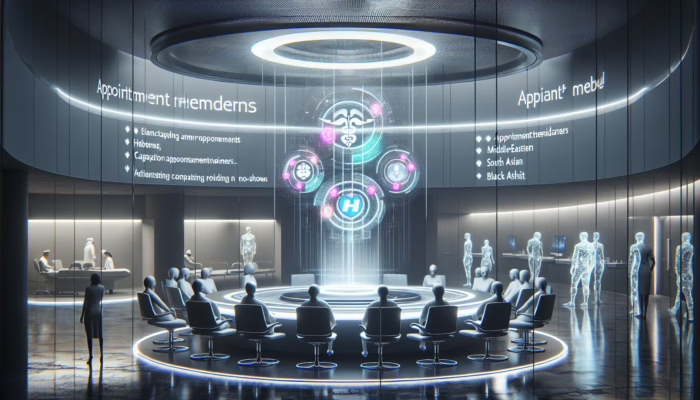Last Updated on 28/05/2025 by Admin
Comprehensive Insights into the Development of Age-Related Hearing Loss
Exploring the Biological Transformations in the Aging Auditory System
As individuals advance in age, the human auditory system undergoes a series of natural changes that gradually diminish hearing abilities. This condition, often referred to as presbycusis, primarily stems from the ongoing deterioration of the hair cells located in the cochlea—key components responsible for transforming sound waves into neural signals. With the passage of time, these cells may exhibit reduced responsiveness, and their regenerative capacity notably declines. The biological aging process is further aggravated by factors such as diminished blood flow to the inner ear and the cumulative effects of oxidative stress, both of which can accelerate auditory degeneration.
Additionally, changes may manifest within the auditory nerve itself, hindering the transmission of sound signals from the ear to the brain. This communication pathway is essential for sound interpretation; any degradation in this circuit can lead to challenges in distinguishing between similar sounds. Research reveals that approximately 30-35% of individuals aged 65 and older experience significant hearing loss, highlighting the widespread prevalence of this issue as a natural consequence of aging.
The impact of biological aging on hearing loss varies among individuals due to factors such as genetics and environmental influences. Nevertheless, it remains a common experience associated with the aging process. As the demographic continues to age, understanding the biological mechanisms underlying hearing loss can inform strategies aimed at alleviating its effects, ultimately enhancing communication and improving the overall quality of life for older adults.
Understanding the Impact of Environmental Noise on Hearing Health
Prolonged exposure to loud noises, whether occurring in workplaces or recreational environments, significantly contributes to the deterioration of hearing over time. This type of noise-induced hearing loss accumulates, often leading to irreversible damage that compounds the effects of natural aging. Common sources of harmful noise include industrial machinery, loud music, and even routine activities like operating power tools, all of which contribute to auditory decline.
Studies indicate that environments with noise levels exceeding 85 decibels pose a substantial risk for hearing damage, particularly with prolonged exposure. For instance, construction workers may encounter hazardous sound levels daily, resulting in a gradual decline in auditory acuity. The World Health Organization estimates that approximately 1.1 billion young people globally are at risk of hearing loss due to excessive noise exposure, underscoring a critical public health issue that demands attention and action.
Moreover, lifestyle choices influenced by environmental factors—such as living in urban areas with substantial traffic noise or frequently attending concerts without adequate hearing protection—can further elevate these risks. This situation highlights the importance of awareness and proactive measures to safeguard hearing, particularly in environments where noise pollution is prevalent and persistent.
Examining the Role of Genetics in Age-Related Hearing Loss
Genetic factors play a significant role in determining an individual’s susceptibility to age-related hearing loss. Inherited traits can influence the structure and functionality of the auditory system, rendering some individuals more vulnerable than others. A family history of hearing loss serves as a strong indicator; if one or both parents have experienced significant auditory decline, the likelihood of their offspring encountering similar challenges increases considerably.
Several genetic factors contribute to hearing loss, including specific gene mutations that can affect cochlear function. For instance, mutations in the GJB2 gene are associated with nonsyndromic hearing loss, which may manifest in childhood or later in life. Advancements in genetic testing have enhanced the ability to identify these predispositions, empowering individuals to take proactive measures to manage their hearing health effectively.
By understanding the implications of genetic predisposition, tailored preventive strategies and early intervention measures can be developed. Individuals with a family history of hearing loss can particularly benefit from regular hearing assessments and increased awareness of their auditory health, potentially slowing the progression of age-related hearing loss and preserving their communication abilities.
Investigating Medical Conditions That Exacerbate Hearing Loss
Numerous medical conditions can exacerbate age-related hearing loss by impacting blood flow and overall auditory health. Chronic diseases such as diabetes and cardiovascular disorders are closely linked to hearing impairment. For example, diabetes may damage the small blood vessels within the inner ear, leading to hearing loss. Research suggests that individuals with diabetes are twice as likely to experience hearing loss compared to those without this condition.
Maintaining optimal cardiovascular health is equally crucial, as conditions that compromise blood flow—such as hypertension or atherosclerosis—can diminish the oxygen supply to the auditory system, resulting in further hearing degradation. This connection underscores the necessity of managing overall health to protect hearing capabilities effectively.
In regions with limited access to healthcare, chronic untreated conditions can lead to a higher prevalence of hearing loss. Regular health check-ups and timely interventions for chronic diseases are vital for preserving auditory health, emphasising the need for integrated healthcare strategies to combat age-related hearing loss on a global scale.
Recognising Symptoms and Monitoring the Progression of Age-Related Hearing Loss
Identifying the Early Warning Signs of Hearing Loss
Recognising the initial symptoms of age-related hearing loss is crucial for ensuring timely intervention. One of the first signs that many individuals notice is the difficulty in comprehending speech, particularly in noisy environments. For instance, a person might find it challenging to follow conversations in a bustling restaurant or during family gatherings. This difficulty arises from the brain’s struggle to process distorted sounds, a challenge further complicated by background noise.
Another early warning sign is the tendency to increase the volume on televisions or radios. Individuals may unknowingly turn up the sound, oblivious to the fact that their hearing sensitivity has diminished. Additionally, some may experience a sensation of muffled hearing or a ringing noise in the ears, commonly known as tinnitus, which often accompanies hearing loss.
These early indicators are frequently overlooked or dismissed as a natural aspect of aging. However, recognising them is vital for motivating individuals to seek professional evaluation. Early detection through audiometric testing can lead to prompt interventions, significantly enhancing quality of life and improving communication capabilities.
Understanding the Gradual Progression of Hearing Loss
Age-related hearing loss typically progresses slowly, often going unnoticed until it significantly disrupts communication. This gradual decline can unfold over several years, making it challenging for individuals to recognise the changes in their hearing abilities. As speech sounds become less distinct, misunderstandings during conversations may become commonplace, leading to frustration and social withdrawal.
The rate at which hearing loss progresses can vary significantly; some individuals may maintain relatively good hearing well into their later years, while others may experience a more rapid decline. Factors such as genetic predisposition and environmental exposures can greatly influence this variability.
Individuals may also develop coping strategies, such as relying on visual cues or frequently asking others to repeat themselves. While these methods can provide temporary relief, they often fail to address the underlying issue. As hearing loss advances, its impact on daily life intensifies, leading to increased feelings of isolation and anxiety.
Understanding the gradual nature of hearing loss can empower individuals to accept their condition and seek assistance sooner rather than later. Early intervention is crucial for slowing the progression and maintaining quality interactions, highlighting the importance of regular hearing evaluations.
Exploring the Effects of Hearing Loss on Daily Life
The implications of age-related hearing loss extend far beyond auditory challenges; they infiltrate all aspects of daily life. The inability to communicate effectively can lead to social isolation and withdrawal, profoundly impacting mental health and overall quality of life. Individuals may choose to avoid social gatherings due to fear of misunderstandings or embarrassment, resulting in feelings of loneliness and depression.
Furthermore, the workplace can become increasingly challenging for those experiencing hearing loss. Difficulties in communicating with colleagues or clients can hinder job performance and limit career advancement opportunities, further exacerbating feelings of inadequacy and frustration.
In addition to interpersonal relationships, age-related hearing loss poses significant safety risks. Individuals may fail to hear alarms, sirens, or warnings, exposing them to danger in various situations. The cumulative effects of these challenges accentuate the urgent need to address hearing loss, as its impact on overall well-being is substantial and far-reaching.
Support systems, including counselling and community groups, can provide essential emotional support to help individuals navigate these barriers. Acknowledging the broader consequences of hearing loss encourages individuals to pursue solutions that enhance their overall quality of life and well-being.
Clarifying the Different Types of Hearing Loss
Understanding the various types of hearing loss is essential for accurate diagnosis and effective treatment. The three primary categories include conductive hearing loss, sensorineural hearing loss, and mixed hearing loss.
Conductive hearing loss occurs when sound waves cannot efficiently travel through the outer or middle ear. This type often results from obstructions, such as earwax buildup or fluid accumulation in the middle ear, and may sometimes be addressed through medical interventions.
Conversely, sensorineural hearing loss results from damage to the inner ear or auditory nerve. This is the most prevalent form of age-related hearing loss and is frequently irreversible. It can impair the ability to hear specific frequencies and differentiate between sounds, leading to considerable communication difficulties.
Mixed hearing loss represents a combination of both conductive and sensorineural components, necessitating a comprehensive treatment approach. Understanding the differences between these types is crucial for tailoring interventions and support strategies effectively.
Regular hearing assessments conducted by an audiologist are vital for identifying the type and severity of hearing loss. Early diagnosis enables timely management options, such as hearing aids or surgical interventions, which can significantly reduce the impact on daily life and improve communication.
The Importance of Professional Consultation for Hearing Loss Management
Consulting with an audiologist is a pivotal step in addressing age-related hearing loss. Audiologists conduct thorough hearing assessments to ascertain the type and severity of hearing loss, facilitating the development of tailored management strategies. These assessments typically include audiograms, which chart the softest sounds an individual can perceive across various frequencies, providing a comprehensive overview of auditory function.
Professional evaluation encompasses more than merely conducting hearing tests; a complete medical examination may be necessary to investigate underlying health issues that could contribute to hearing loss. For instance, conditions like diabetes or hypertension can significantly impact auditory health, and addressing these factors can enhance hearing outcomes.
Input from patients regarding their self-reported symptoms is invaluable in this process. Individuals can provide critical insights into their daily challenges and the specific scenarios in which they experience the most difficulty. This information assists audiologists in formulating targeted treatment plans that prioritise the unique needs of the individual.
Additionally, psychological evaluations may be beneficial in assessing the emotional and psychological toll of hearing loss. Many individuals grapple with feelings of frustration, anxiety, or depression due to their condition. Comprehensive care that addresses both physical and emotional health is vital for effective management and improved quality of life.
Proactive Prevention Strategies for Age-Related Hearing Loss
Implementing Protective Measures Against Noise Exposure
Preventing age-related hearing loss starts with guarding oneself against excessive noise exposure. Utilising hearing protection, such as earplugs or noise-canceling headphones, is essential in environments where loud sounds are prevalent. Occupational settings, such as construction sites or factories, often expose workers to damaging noise levels, necessitating the mandatory use of protective gear.
Awareness campaigns can play a crucial role in educating the public about noise-induced hearing loss, emphasising the importance of preventive measures. For example, concerts and music festivals often feature loud performances, leading attendees to exceed safe listening levels. Encouraging individuals to use hearing protection in these scenarios can help prevent long-term auditory damage and preserve hearing health.
Moreover, incorporating noise-reduction strategies into daily life can contribute to better auditory health. Simple practices, such as keeping the volume at a moderate level when using personal devices, can significantly minimise the risk of hearing loss over time, promoting a healthier auditory environment.
Understanding the significance of hearing protection empowers individuals to take proactive steps in preserving their hearing, ultimately reducing the global incidence of age-related hearing loss and enhancing community awareness.
Adopting a Healthy Lifestyle for Hearing Preservation
Maintaining a healthy lifestyle is a vital aspect of preventing age-related hearing loss. Regular physical activity, adherence to a balanced diet, and effective management of chronic health conditions all contribute positively to auditory health and overall well-being.
Research indicates a strong correlation between cardiovascular health and hearing functionality, as the auditory system requires an adequate blood supply to function optimally. Engaging in regular exercise promotes circulation, ensuring that essential nutrients and oxygen reach the inner ear. Incorporating heart-healthy foods, such as fruits, vegetables, and whole grains, can provide vital nutrients that support auditory function and overall health.
Furthermore, effectively managing chronic conditions like diabetes and hypertension is crucial for preserving hearing capabilities. Monitoring blood sugar levels and maintaining stable blood pressure can help protect the delicate structures of the auditory system from potential damage, thereby promoting long-term hearing health.
Moreover, avoiding detrimental substances, such as tobacco and excessive alcohol consumption, can enhance overall health and decrease the likelihood of hearing loss. A holistic approach to health can foster resilience against age-related hearing loss, promoting a better quality of life for individuals as they age.
The Necessity of Routine Hearing Check-ups
Routine hearing assessments are essential for the early detection and management of age-related hearing loss. Regular check-ups with an audiologist allow individuals to remain informed about their auditory health, facilitating timely interventions when necessary and ensuring effective management of potential issues.
The frequency of these assessments may vary, but individuals over the age of 50 should consider undergoing annual hearing tests. Early detection can result in more effective management options, preventing the progression of hearing loss along with its associated challenges, and improving communication outcomes.
Additionally, healthcare providers play a crucial role in promoting routine hearing evaluations. Integrating hearing health into standard medical check-ups can enhance awareness and encourage proactive management of auditory issues. This collaborative approach emphasises the importance of comprehensive healthcare, addressing both physical and auditory well-being to improve quality of life.
As populations age, establishing norms around regular hearing assessments can contribute to a reduction in the prevalence of age-related hearing loss, ultimately enhancing overall quality of life on a global scale.
Raising Awareness Through Education on Hearing Health
Educating the public about hearing health and the risks associated with age-related hearing loss is critical for effective prevention. Awareness campaigns can inform individuals about the importance of protecting their hearing, recognising early signs of hearing loss, and seeking professional assistance when needed.
Utilising diverse platforms—such as social media, community workshops, and public health initiatives—can amplify these crucial messages. Sharing success stories of individuals who have effectively managed their hearing loss can inspire proactive measures among peers and foster a supportive community.
Moreover, integrating hearing health education into school curriculums can help cultivate a culture of awareness from an early age. Teaching children about the importance of hearing protection can instil lifelong habits that contribute to better auditory health and well-being.
This collective effort towards education and awareness can empower individuals to take ownership of their hearing health, ultimately reducing the prevalence of age-related hearing loss across diverse populations worldwide and fostering a healthier society.
Practising Safe Listening Habits
Adopting safe listening practices is crucial for preventing age-related hearing loss. For those who frequently enjoy music via headphones or earbuds, following the 60/60 rule—listening at no more than 60% volume for a maximum of 60 minutes per day—can significantly lower the risk of auditory damage and promote healthier listening behaviours.
Taking regular breaks from prolonged noise exposure is equally important. Encouraging individuals to step away from loud environments or take quiet breaks during events can help mitigate the effects of noise on their hearing and contribute to long-term auditory health.
Additionally, utilising sound level monitoring apps can assist individuals in tracking their exposure to loud sounds, empowering them to make informed decisions regarding their auditory health and encouraging responsible listening habits.
Creating a culture where safe listening practices are prioritised can lead to a significant reduction in age-related hearing loss, underscoring the importance of personal responsibility in protecting hearing health and fostering awareness within communities.
Exploring Effective Treatment Options for Age-Related Hearing Loss
Harnessing Hearing Aids for Improved Auditory Experiences
Hearing aids are a widely recognised solution for individuals experiencing significant age-related hearing loss. These devices amplify sounds, making it easier for users to hear conversations and other essential sounds in their environments. Recent technological advancements have led to the creation of sophisticated hearing aids that offer numerous features, including noise reduction, directional microphones, and connectivity to smartphones, enhancing user experience.
Choosing the right hearing aid requires professional guidance from an audiologist, who can assess the specific needs of each individual. Custom-fitted devices ensure maximum comfort and effectiveness, allowing users to enjoy improved hearing in various settings, whether at home, work, or during social gatherings.
Moreover, the stigma surrounding hearing aids has notably diminished in recent years, with many people embracing them as essential tools for enhancing their quality of life. Awareness campaigns that highlight the benefits of hearing aids can further motivate individuals to seek solutions, promoting healthier communication and social interaction.
Ultimately, investing in hearing aids can lead to increased social engagement and a more fulfilling life, illustrating the transformative potential of technology in managing age-related hearing loss effectively.
Cochlear Implants: A Powerful Alternative for Severe Hearing Loss
For individuals with severe or profound age-related hearing loss, cochlear implants may represent a viable treatment option. Unlike hearing aids, which primarily amplify sound, cochlear implants directly stimulate the auditory nerve, bypassing damaged hair cells in the inner ear. This surgical intervention can restore the perception of sound for those who do not benefit from conventional hearing aids, significantly improving their quality of life.
The process involves a comprehensive evaluation by an audiologist and an ear specialist to determine eligibility for the procedure. Following implantation, users typically undergo auditory rehabilitation to adapt to their new hearing experience, with many reporting significant improvements in their communication abilities and overall auditory perception.
Cochlear implants have proven life-changing for countless individuals, enabling them to reconnect with their surroundings and vastly improve their quality of life. As technology continues to evolve, the effectiveness and accessibility of cochlear implants are likely to expand, offering hope to a broader audience facing age-related hearing loss and paving the way for innovative treatment solutions.
Implementing Effective Communication Strategies for Enhanced Interaction
In addition to medical treatments, adopting effective communication strategies can substantially enhance the quality of life for individuals experiencing age-related hearing loss. Learning new methods of communication can foster stronger connections and reduce feelings of frustration during interactions.
Utilising visual cues, such as facial expressions, gestures, and body language, can significantly aid in understanding conversations better. Lip-reading can also be an invaluable skill for those with hearing loss, allowing them to extract additional information from visual signals and enhancing their overall communication capabilities.
Encouraging open dialogue with family and friends about hearing difficulties creates a supportive environment where individuals feel comfortable requesting clarification or repetition. This collaborative approach to communication can help alleviate feelings of isolation and promote social engagement, thereby enriching interpersonal relationships.
Investing time in learning and practising these strategies can empower individuals with age-related hearing loss to navigate their environments more effectively, fostering meaningful interactions in their daily lives and enhancing their overall quality of life.
Thriving with Age-Related Hearing Loss
Finding Emotional Support to Cope with Hearing Loss Challenges
Living with age-related hearing loss can present various emotional challenges that significantly impact an individual’s overall well-being. Feelings of isolation, frustration, and anxiety are common among those struggling to communicate effectively. Seeking emotional support through counselling or support groups provides individuals with a vital outlet to express their feelings and share experiences with others facing similar challenges.
Support groups foster a sense of community, creating connections and understanding among individuals who can relate to each other’s struggles. These environments provide opportunities for sharing coping strategies and learning from one another, ultimately enhancing resilience in the face of hearing loss and promoting a sense of belonging.
Additionally, mental health professionals can assist individuals in developing coping mechanisms to manage the emotional toll of hearing loss. Techniques such as mindfulness, stress reduction, and positive affirmations can empower individuals to take control of their emotional health, leading to a more fulfilling life and greater emotional resilience.
Recognising the importance of emotional support highlights the necessity of a holistic approach to managing age-related hearing loss, addressing both auditory and psychological well-being to promote overall health and happiness.
Techniques for Effectively Adapting to Hearing Loss
Adapting to age-related hearing loss necessitates the implementation of practical techniques that enhance communication. Utilising visual cues, such as facial expressions and gestures, substantially improves understanding in social interactions. Encouraging speakers to maintain eye contact and face individuals with hearing loss can facilitate better communication and enhance the quality of interactions.
Additionally, individuals may find value in learning lip-reading skills, which assist in deciphering spoken language when sound clarity is compromised. Engaging in exercises that practice these techniques can help individuals become more comfortable and confident in their communication abilities, fostering a sense of agency.
Creating a supportive environment at home and in social settings is equally vital. Encouraging family members and friends to exhibit patience and understanding during conversations can foster better relationships and minimise frustration for everyone involved.
Implementing these adaptation techniques can enable individuals to navigate daily interactions more effectively, promoting a sense of agency and confidence in managing age-related hearing loss and enriching social experiences.
Utilising Technological Aids to Improve Hearing Experiences
Technology plays a crucial role in assisting individuals with age-related hearing loss. Smartphones and specialised applications offer a variety of tools designed to enhance auditory experiences. For instance, numerous apps can amplify sounds, provide subtitles for videos, or facilitate conversations through speech-to-text features, enabling users to remain engaged in various situations and enhancing their overall quality of life.
Additionally, assistive listening devices, such as FM systems and induction loop systems, can improve sound clarity in public venues like theatres and lecture halls. These devices operate by directly transmitting sound from a source to the user’s hearing aid or cochlear implant, effectively bypassing background noise and enhancing overall listening experiences.
Educating individuals about available technological aids is critical for encouraging their utilisation. Many people may not be aware of the innovations designed to assist those with hearing loss; raising awareness can empower them to explore these beneficial solutions and enhance their auditory experiences.
The integration of technology into daily life holds the potential to transform the experience of age-related hearing loss, enhancing communication and fostering greater independence for those affected by hearing challenges.
Addressing Frequently Asked Questions About Age-Related Hearing Loss
What are the primary causes of age-related hearing loss?
Age-related hearing loss primarily arises from biological aging, environmental noise exposure, genetic predispositions, and specific medical conditions that can negatively impact auditory health and functioning.
How can I recognise the early indicators of hearing loss?
Early signs include difficulties in understanding speech in noisy settings, needing increased volume on devices, and experiencing muffled hearing or ringing sensations in the ears, all of which are indicative of potential hearing challenges.
What types of hearing loss are prevalent?
The three main types include conductive hearing loss, which relates to sound transmission issues; sensorineural hearing loss, which results from inner ear damage; and mixed hearing loss, which combines both forms, necessitating tailored treatment approaches.
What preventive measures can I take to avoid age-related hearing loss?
Preventive strategies include using ear protection in loud environments, maintaining a healthy lifestyle, scheduling regular hearing check-ups, and practising safe listening habits to protect auditory health and well-being.
What treatment options are available for hearing loss?
Available treatment options encompass hearing aids for amplification, cochlear implants for severe cases, and effective communication strategies to improve social interactions and enhance overall quality of life for individuals with hearing challenges.
How do hearing aids function?
Hearing aids amplify sound, making it easier for individuals with hearing loss to perceive conversations and other significant sounds in their surroundings, thus improving their ability to engage effectively with their environment.
What role do cochlear implants serve?
Cochlear implants directly stimulate the auditory nerve, bypassing damaged hair cells in the inner ear, providing a solution for individuals who do not benefit from hearing aids and restoring their ability to perceive sound.
How can emotional support aid those coping with hearing loss?
Emotional support from counselling or support groups assists individuals in managing feelings of isolation and frustration, fostering connections with others who share similar experiences and enhancing overall emotional well-being.
What adaptation techniques can enhance communication?
Utilising visual cues, maintaining eye contact, and practising lip-reading can significantly improve communication for individuals experiencing age-related hearing loss, enabling more effective interactions in daily life.
What technological aids are accessible for those with hearing loss?
Smartphones, specialised apps, and assistive listening devices like FM systems can enhance auditory experiences and facilitate communication for individuals with hearing loss, improving their quality of life and social engagement.
Explore our world on X!
The post Age-Related Hearing Loss: Understanding Its Development appeared first on The Microsuction Ear Wax Removal Network.











